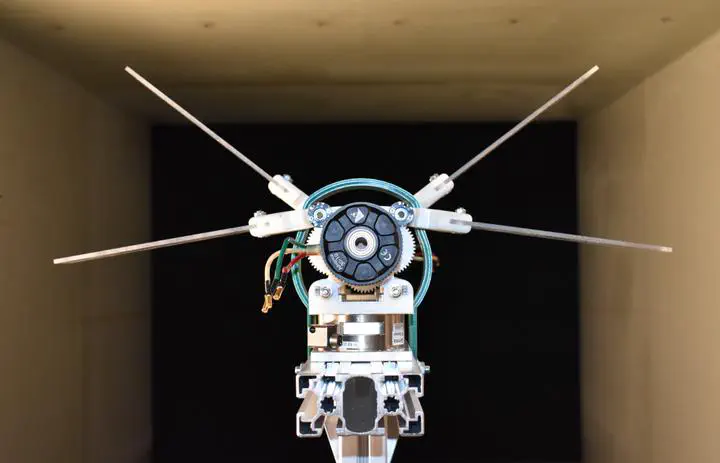Experimental Analysis of a Large-scale Tandem Flapping Wing System
 Model in Wind Tunnel
Model in Wind Tunnel
Abstract
The present research concerns the design and wind tunnel testing of a medium-scale tandem flapping wing setup. As first step, tests were conducted with simple wings (rectangular flat plates at 0° of pitch). This provided a basic understanding of the key parameters for these types of flows as well as a general understanding of the aerodynamic response. A first series of tests focused on the semi-flapping case, where only the front wing was flapping, while the aft one remained at a fixed dihedral angle. It was found that the front wing’s lift was heavily degraded when the aft wing’s dihedral was important. The aft wing was also shown to generate thrust in all situations evaluated. For tandem flapping situations, the phase offset between the two sets of wings revealed to be a critical factor in the aerodynamic response. Finally, it was shown that increasing the horizontal distance between the two sets of wings lead to a significant decrease in the mean lift produced by both sets; and most notably by the front one.